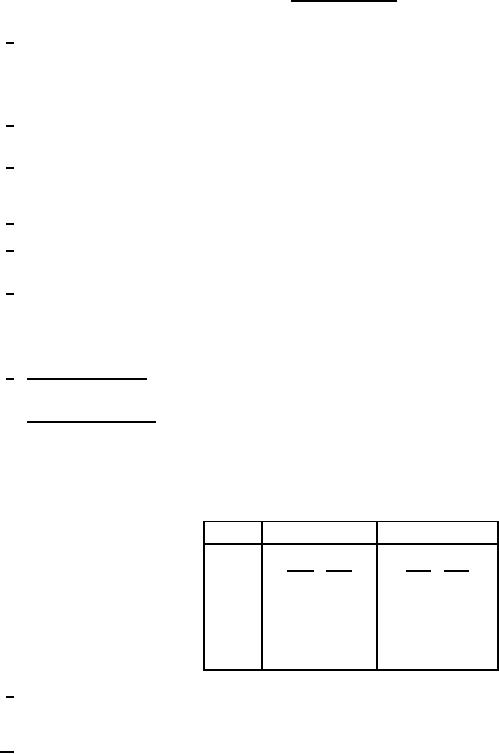
MIL-PRF-1/1047D
TABLE I. Requirement or test - Continued.
1/ The transit-time heating effect of the cathode shall be compensated for by a reduction in heater voltage after dynamic
operation of the tube has started. The back heating is a function of frequency, grid current, grid bias, anode current, duty
cycle, and circuit design and adjustment. There is an optimum heater voltage which will maintain the cathode at the correct
operating temperature for a particular set of operating conditions. A maximum variation of ± 5 percent from optimum is
permitted. No reduction in heater voltage is required up to and including 500 MHz.
2/ The regulation or series-anode-supply impedance, or both, shall limit the instantaneous peak current, with the tube considered
as a short circuit, to a maximum of 10 times the specified maximum current rating.
3/ Sufficient conduction and convection cooling shall be provided to limit the radiator and envelope temperature to the specified
maximum at 175°C under all operating conditions. Reliability will be seriously impaired if this maximum temperature is
exceeded.
5/ This test shall be the first test performed at the conclusion of the holding period.
6/ Other tube contact configurations may be used provided the tube contact area remains unchanged and the socket, jig, or cavity
gives equal performance. Mounting of the jig, socket, or cavity may be at the option of the manufacturer.
7/ The applied voltage pulse shape shall be measured with a non-inductive resistor of 1,150 ohms ± 2 percent inserted in place of
the tube. The pulse shape shall be tp = 3.0 µs ± 10 percent, tr = 0.4 µs maximum, tf = 0.7 µs maximum. The pulse repetition
rate shall be adjusted so that Du = 0.0025 ± 5 percent with the above measured pulse length. Test in cavity in accordance with
Drawing 279-JAN. The cavity shall be connected to a load with a VSWR less than 1.5. The oscillator output coupling and grid
or cathode resistor may be adjusted for maximum power output.
8/ Grid-anode resonance: Test in cavity in accordance with Drawing 278-JAN. Cavity shall resonate at 1,354 ± 2.0 MHz with
tuning slug in accordance with Drawing 277-JAN at TA = 25°C ± 5°C.
Grid-cathode resonance: Test in cavity in accordance with Drawing 283-JAN. Cavity shall resonate at 1,719 ± 2.0 MHz with
tuning slug in accordance with Drawing 277-JAN at TA = 25°C ± 5°C.
When plotted on graphs of resonant frequency versus grid-anode capacitance and resonant frequency versus grid-cathode
capacitance, the tube under test shall be represented by a point within a parallelogram whose four corners are located by the
following points:
Points
Capacitance (pF)
Frequency (MHz)
C-gp
C-gk
F-gp
F-gk
1
1.86
5.60
1927.5
1745
2
1.86
5.60
1997.5
1815
3
2.16
7.60
1842.5
1700
4
2.16
7.60
1912.5
1770
9/ There shall be no evidence of grid to cathode arcing or grid current instability when tested in a circuit in accordance with
Drawing 255-JAN. This test shall be performed before the pulsing emission and power oscillation (pulse) tests. Initial arcing is
permitted if followed by a 15-second period with no indications of subsequent arcing.
10/ The rf bandwidth measured at one-quarter power by means of an rf spectrometer shall be within the limits specified.
7
For Parts Inquires call Parts Hangar, Inc (727) 493-0744
© Copyright 2015 Integrated Publishing, Inc.
A Service Disabled Veteran Owned Small Business